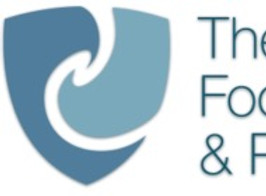Find the Repositories...

EMPRES-i
(FAO Emergency Prevention System for Transboundary Animal and Plant Pests and Diseases)
What it contains?
Global disease outbreak data for animal health, especially transboundary and zoonotic diseases.
Why it is helpful?
Real-time disease intelligence supports early warning, risk analysis, and response.

OIE-WAHIS
(World Animal Health Information System)
What it contains:?
Official data on global animal disease outbreaks, including terrestrial and aquatic species.
Why it is helpful?
Facilitates transparency, early detection, and international reporting of animal health events.

ProMED-mail
(Program for Monitoring Emerging Diseases)
What it contains: Informal reports of emerging disease outbreaks (human, animal, plant).
Why it is helpful: Rapid updates from field-level surveillance, excellent for early warning systems.

HealthMap
HealthMap
What it contains: Interactive map-based disease surveillance using official and informal sources.
Why it is helpful: Provides near real-time visualization of emerging disease threats across species.

TADinfo
(Transboundary Animal Disease Information System)
What it contains: Disease data management software developed by FAO for national veterinary services.
Why it is helpful: Enhances in-country disease data collection and risk analysis.

ILRI
ILRI Data Portal
What it contains: Datasets from livestock and zoonoses studies conducted globally.
Why it is helpful: Promotes open science and data-driven decision-making in animal health.

GBADs
(Global Burden of Animal Diseases)
What it contains: Economic and health impact data related to animal diseases worldwide.
Why it is helpful: Aims to quantify the true burden of animal diseases, guiding investment and policy.

VectorMap
VectorMap
What it contains: Global data on vectors (mosquitoes, ticks, sandflies) and associated pathogens.
Why it is helpful: Ideal for mapping vector-borne disease risk and planning control measures.

GBIF
(Global Biodiversity Information Facility)
What it contains: Occurrence records of animals, vectors, reservoir species, and environmental data.
Why it is helpful: Can support ecological niche modeling and spillover risk analysis.

(ADNS – EU)
Animal Disease Notification System
What it contains: Notified outbreaks of listed animal diseases across EU member states.
Why it is helpful: Provides harmonized, official data for trend analysis and early warning.

Eurosurveillance
Eurosurveillance (with ECDC Surveillance Atlas)
What it contains: Vector-borne, zoonotic, and notifiable disease data in Europe.
Why it is helpful: Offers structured datasets and maps for disease monitoring and research.

NADRES
(India – ICAR-NIVEDI)
What it contains: National Animal Disease Reporting System for India.
Why it is helpful: Core surveillance system to monitor and predict outbreaks at national and state levels.

IBP
India Biodiversity Portal
What it contains: Crowdsourced and expert-curated biodiversity data of Indian fauna, including vectors and wildlife reservoirs.
Why it is helpful: Useful for ecological assessments of disease risks and wildlife interface zones.

Wikivet
Wikivet
What it contains: Collaborative wiki with veterinary disease info, diagnostics, and public health.
Why it is helpful: Educational hub for students, researchers, and professionals in One Health fields.

EpiCollect5
EpiCollect5
What it contains: Mobile and web-based data collection system for field-based epidemiology.
Why it is helpful: Empowers epidemiologists to collect, analyze, and visualize field data seamlessly.

ZOVER
ZOVER (Zoonoses and Vectors) Database – China
What it contains: Comprehensive database of zoonotic pathogens, vectors, and hosts in China with spatial metadata.
Why it is helpful: A model One Health database for zoonotic disease ecology and hotspot identification.

AGRIIS
AGRIIS (Agricultural Research Information System) – ICAR, India
What it contains: Research projects, datasets, and technologies related to Indian agriculture and livestock health.
Why it is helpful: Connects epidemiological research to real-world agricultural interventions and policies.

CSFPH
(Center for Food Security and Public Health)
What it contains: Educational resources, fact sheets, and outbreak guides for zoonotic and transboundary diseases.
Why it is helpful: Ideal for veterinarians, para-vets, and public health professionals looking for disease summaries and control info.
